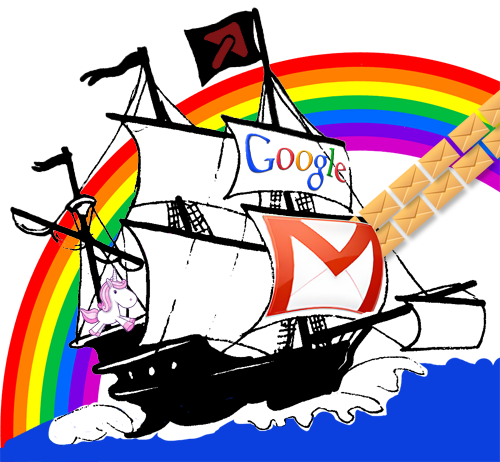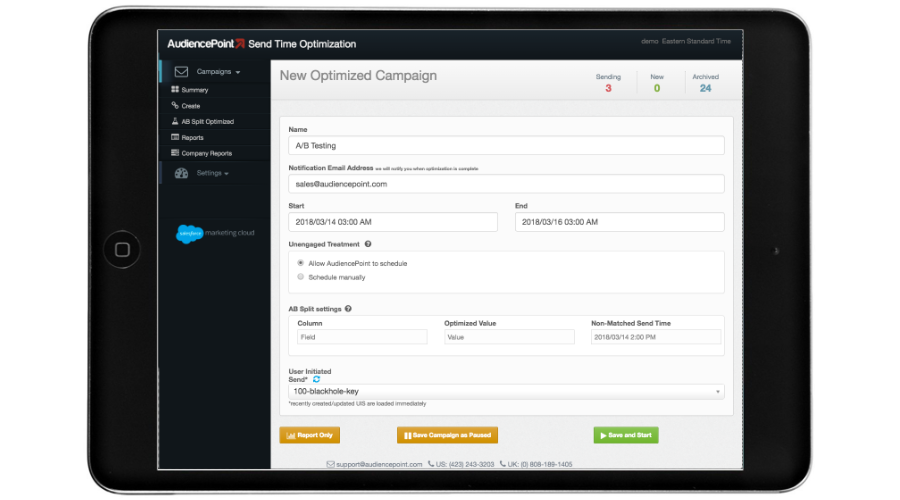AudiencePoint is thrilled to announce our new integration with Klaviyo! AudiencePoint is looking for partners to pilot our...
How Do You Warm Up Your Inbox?
Email warmup is a critical process for businesses and digital marketing professionals striving for optimal email deliverability, inbox placement, and engagement rates. Warming up an inbox involves gradually increasing your email-sending limit to establish credibility with email service providers (ESPs). But how exactly do you achieve this without jeopardizing your domain’s standing?
Importance of Gradually Increasing Email Activity
Gradually increasing your email activity is pivotal to preventing your emails from being flagged as spam. Sending too many emails abruptly can trigger spam filters, damaging your domain’s reputation. Starting with a small number of emails to a few engaging recipients is wise. Over time, you can increase the volume while ensuring that recipient interaction remains positive, a significant factor considered by ESP algorithms.
Steps to Manually Warm Up an Inbox
The manual approach involves a strategic plan to enhance your domain’s reputation. Begin by sending emails to known contacts who are likely to interact with your content. Interaction includes opening emails, replying, or even marking them as important. Consistent engagement informs ESPs of your authentic sender identity, gradually improving inbox placement.
Using Email Warm-Up Tools for Efficiency
Email marketers often turn to Email warm-up tools for automated help. Tools like AudiencePoint and others are designed to handle the intricacies of the warmup process efficiently. They simulate the gradual increase in email activity and monitor the engagement markers that ESPs consider vital, thus ensuring a seamless and faster inbox warm-up.
How Long Does It Take To Warm Up A New Email Domain?
Warming up a new email domain is a critical step in email marketing and typically requires patience and precision. On average, a new email domain warmup can take anywhere from four to eight weeks. This period allows the domain to establish its reputation gradually, minimizing the risk of emails being flagged as spam or, even worse, being blacklisted.
Typical Duration for Warming Up a New Domain
The time required to effectively warm up an email domain varies. During this period, it is essential to start sending emails in small quantities and progressively increase the volume. The key is to build trust with Internet Service Providers (ISPs) by signaling that your emails are not spam but intended for genuine communication. The process involves patience and consistency.
Factors Affecting the Warmup Period
Several factors can influence the warmup period. These include the existing domain reputation, the engagement rate of the recipients, and the level of authentication implemented (such as DKIM and SPF records). High initial engagement rates can expedite the process, while low engagement or high bounce rates may prolong it. Therefore, having a carefully structured plan that involves sending content that encourages interaction is critical.
Monitoring Metrics for Successful Warmup
Throughout the warmup process, it’s vital to monitor key metrics that indicate success. Factors such as email deliverability rates, open rates, click-through rates, and bounce rates provide insight into the progress of the warmup. Adjusting your strategy based on these metrics is crucial. Tools like AudiencePoint can be immensely beneficial, offering real-time data and tailored insights to optimize your domain warmup processes. With AudiencePoint, marketers can reduce the time needed to warm up their inboxes using advanced data-driven strategies.
Is Email Warm Up Necessary?
Email warm-up is an essential part of ensuring the success of your email marketing campaigns, particularly when it comes to preserving your sender reputation and ensuring high deliverability rates. Many might question whether email warm-up is necessary or does email warming services work? The simple answer is yes, especially if you’re transitioning to a new email service provider, setting up a new domain, or scaling up your email operations significantly. Learn more from our Email Warm-Up Guide.
Understanding the Risks of Not Warming Up
Neglecting the warm-up process can lead to emails being flagged as spam, poor engagement rates, and even being blacklisted by Internet Service Providers (ISPs). A domain that hasn’t been properly warmed can trigger red flags for ISPs, as a sudden spike in email activity is often associated with spam behavior. This can dramatically reduce your email campaign’s effectiveness.
Benefits of a Properly Warmed-Up Inbox
A well-executed email warm-up ensures that ISPs see you as a legitimate sender with a good sender reputation. It helps in building trust with mail servers, leading to higher delivery rates. Additionally, it provides gradual data that helps to tune your campaigns for optimal performance. You can track open rates, bounce rates, and unsubscribe rates more accurately. This reduces the risk of damaging your business’s reputation attached to the domain.
Scenarios Where Warming Up is Crucial
Not every situation might require a warm-up, but there are scenarios where it is non-negotiable. For instance, if you’ve been dormant and plan to resume emails, warming up becomes necessary. The same applies when registering new domains or switching ESPs. In such cases, free email warm-up tools can be quite advantageous, enabling an efficient way to build your credibility with minimal effort.
How Long To Wait Between Cold Emails?
Crafting effective cold emails can be challenging, but determining how long to wait between sending them is equally crucial. Timing can significantly impact your engagement rates, ensuring your messages are not marked as spam and maintaining a healthy sender reputation.
Recommended Intervals Between Sending Cold Emails
It is generally advised to wait at least 48 hours between successive cold email attempts to the same recipient. This time gap ensures your emails do not overwhelm the recipient and come across as respectful and professional. Additionally, this interval allows sufficient time for the recipient to open and respond to your email.
Impact of Frequency on Email Deliverability
The frequency with which you send cold emails can have a profound effect on deliverability rates. Sending too many emails in quick succession may trigger spam filters, reducing your read rates and possibly damaging your domain’s reputation. Hence, adopting a slow and steady approach ensures higher deliverability and better engagement.
Strategies to Optimize Response Rates
To enhance the efficacy of your cold email campaigns, focus on creating personalized content that resonates with the recipient’s interests or pain points. Utilize tools like an email warm-up tool to gradually increase your sending volume and improve the likelihood that your emails land in the recipient’s primary inbox rather than the promotions or spam folder.
Incorporating these strategies into your cold email routine can significantly boost your open and response rates, giving your campaign the advantage it needs in a crowded email landscape.
Discover how AudiencePoint can maximize your email engagement by providing insights and strategies that are tailored to your subscribers. By utilizing our advanced metrics and data-driven approach, you can ensure your emails are delivered at the optimal time, ultimately driving higher engagement and increased revenue. Contact AudiencePoint today!





